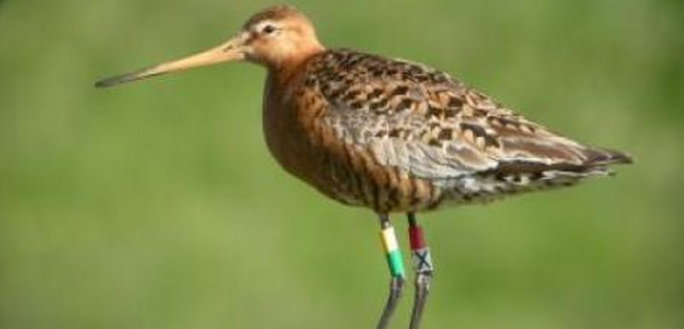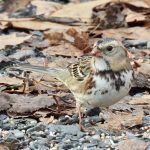
Migration Shift Cause Better Understood
Birds have been migrating earlier. The mechanism by which this is happening in at least some species of birds is very interesting. If you know a lot about birds, this might be entirely expected. I’d love to know if you think this is surprising.
First, climate change is the ultimate cause. The breeding season is longer, starts earlier. But individual birds are not migrating sooner. They migrate every year almost exactly at the same time. But, getting the nest set up, amorous acitivites, the laying and hatching of the egg, all that, happens earlier. Then, the birds migrate in relation to the earlier hatch date. Each generation of birds migrates a bit earlier than the last.
Speaking mainly of Godwits, Dr Jenny Gill (UEA) says:
"Because we have been following the same birds for so many years, we know the exact ages of many of them.
"We found that birds hatched in the late 1990s arrived in May, but those hatched in more recent years are tending to arrive in April. So the arrival dates are advancing because the new youngsters are migrating earlier.
“Climate change is likely to be driving this change because godwits nest earlier in warmer years, and birds that hatch earlier will have more time to gain the body condition needed for migration and to find good places to spend the winter, which can help them to return early to Iceland when they come back to breed.”
This can also explain why advances in migration timing are not common among species migrating over long distances. “Many long-distance migrants arrive so late on the breeding grounds that they have little opportunity to respond to warming conditions by nesting earlier.”
GannetCam
The RSPB and the University of Exeter have teamed up to make this amazing footage using lightweight cameras strapped onto the back of gannets.
Keep an eye on the bird flu
The bird flu, in Asia, has been out of the news but that’s just because the news ignores anything that happens for more than three days in a row that is not an election. There has been a steady, low level recurrence of tiny outbreaks or individual infections continuously for the last couple of years. There may be a new strain not before seen (still looking for verification of that) and there are reasons to believe, the experts say, that this winter could see a spike in bird to human transmission. This is of interest to birders and those concerned with bird conservation because of the impact on wild birds both because of the flu (in some cases) and because of ill advised eradication programs. Or, really, for that matter, well advised eradication programs if such a thing ever exists.
First this:
Bird Flu Strain Jumps From Animals To People For The First Time
A common strain of bird flu that had previously only infected poultry has reached what’s reported to be its first human patient, according to a study released in the Lancet Respiratory Medicine today.Earlier this spring, the Taiwanese woman came to the hospital with flu-like symptoms and a shortness of breath. A throat swab sent to the Taiwan Centres For Disease Control helped scientists identify H6N1, a subtype of avian flu that has been spreading in chickens.
And then this:
Bird flu viruses could re-emerge in upcoming flu season, warns UN agency
The United Nations food agency has issued a new warning saying bird flu viruses continue to pose a serious threat to human and animal health, adding they will pose a greater risk during the upcoming flu season.
“Bird flu viruses continue to circulate in poultry. Efforts must continue and be strengthened, not only in affected countries, but also in neighbouring States and areas with strong trade linkages,” said the Food and Agriculture Organization (FAO) Chief Veterinary Officer, Juan Lubroth, at a joint meeting with the United States Agency for International Development (USAID), the World Health Organization (WHO) and the World Organisation for Animal Health (OIE).
Mr. Lubroth noted that while the world is more prepared than ever before to respond to the H7N9 and H5N1 avian influenza viruses, it is still important to remain vigilant.
“This is especially true for H7N9 since it causes no clinical signs in birds and is therefore very difficult to detect in poultry,” he said.













Greg – I don’t see any link for the Gannetcam
Sorry, Doug. There was supposed to be a YouTube video there but it vanished.
I put a link to the YouTube site. Thanks for pointing that out.